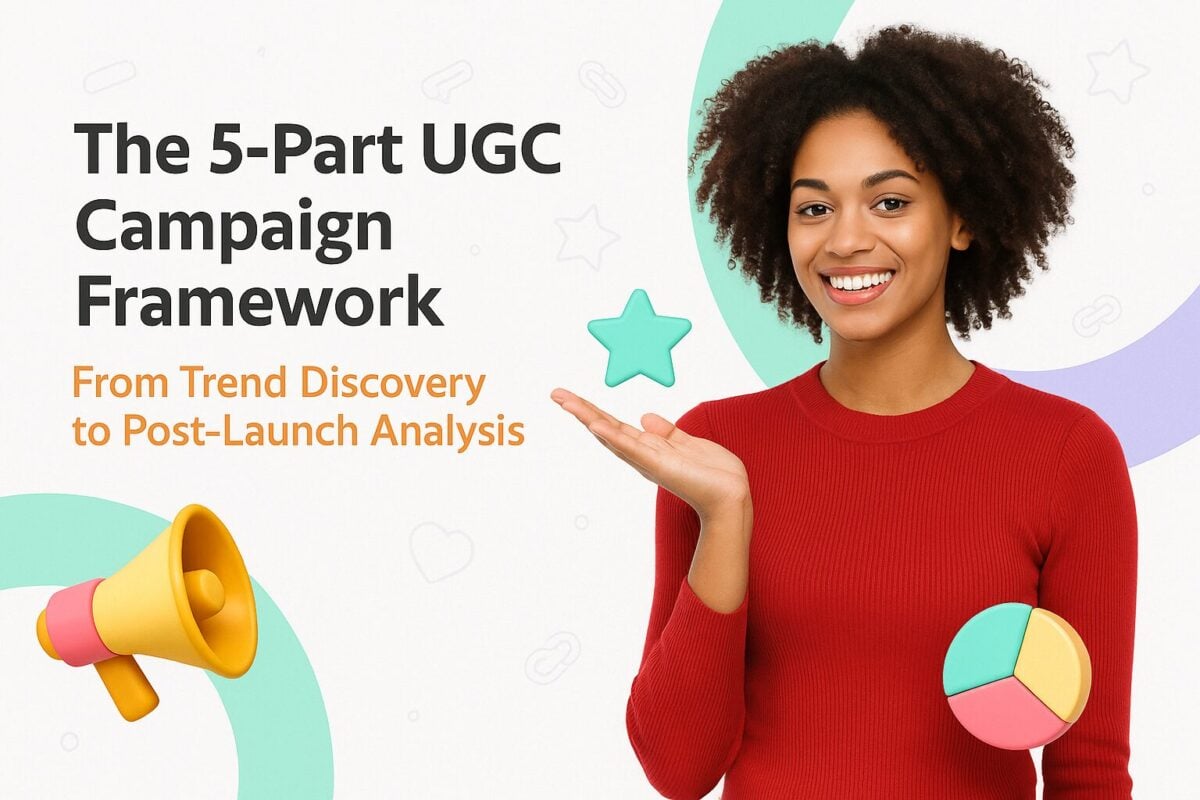Marketers need to know the stages of the marketing funnel and how customers navigate them. So they can create effective strategies that drive business results.
This article walks you through the stages. And explains which tactics work for each.
But first, here are some basics.
What Is a Marketing Funnel?
A marketing funnel (also known as a sales funnel) is a model that reflects how people go through buying stages (i.e., the buyer’s journey). It represents their path from becoming aware of a brand all the way to becoming a customer.
And the model is crafted from a marketing and sales perspective.
Why a funnel?
Because of its shape. Which narrows as those in the funnel drop out.
This is natural. Not every audience member will move to the next stage because they might decide to choose another brand. Or decide not to make a purchase at all.
While a typical buyer’s journey isn’t as linear as the funnel suggests, it’s still helpful for learning more about your audience, deciding which marketing tactics to use, etc.
Without a funnel guiding your strategy, you might miss key opportunities to nurture and convert customers.
The 3 Stages of the Marketing Funnel
There are multiple funnel frameworks businesses use to best fit their needs.
For instance, the Awareness, Interest, Desire, Action (AIDA) model is common among marketers for all types of businesses. But some use a more granular model—and they may even include a post-purchase stage.
No matter what framework you use, you can distill it into three basic stages: the top of the funnel (FoFu), the middle of the funnel (MoFu), and the bottom of the funnel (BoFu). Collectively known as ToFu, MoFu, and BoFu.
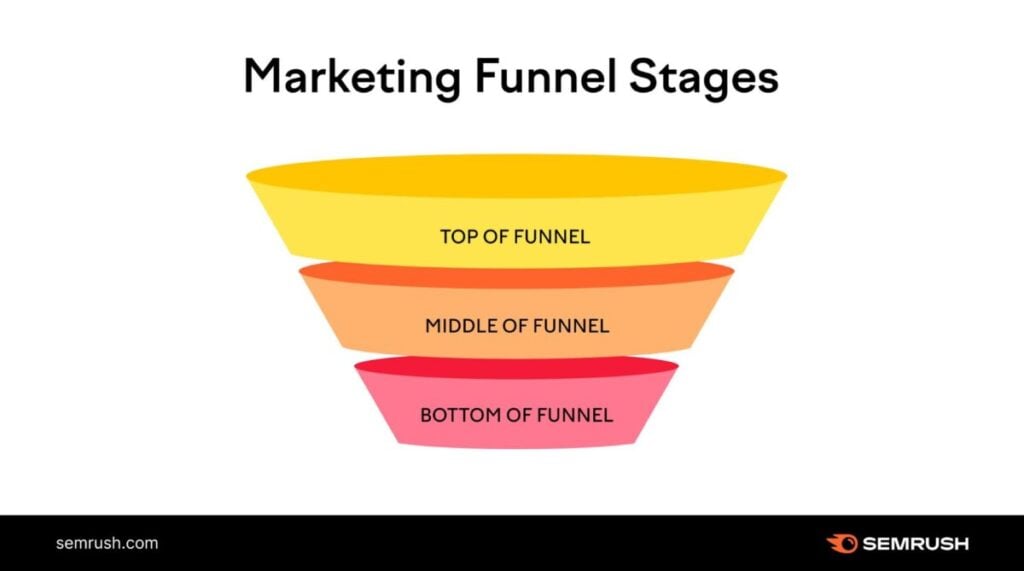
Simple conversion funnel
Let’s look at each stage in detail.
Top of the Funnel
Top-of-funnel marketing introduces potential customers to your brand, products, and/or services.
Prospects are in discovery mode and are doing relatively general research. So, they need informative content rather than deep dives into your brand and what it offers.
This audience is aware there’s a need or desire they want to fulfill. But they’re only just becoming aware of their options.
For example, someone who’s interested in trying trail running may come across this blog post by the clothing brand Icebreaker after doing an online search:

Benefits of trail running
This ToFu post explains the benefits of trail running and how to get started. But also mentions Icebreaker clothing where relevant.
To create content for this stage of the funnel, you need to know the right keywords to target. So you can use search engine optimization (SEO) to boost your chances of appearing among the top results for relevant searches.
As an example, consider this Semrush blog post that appears when someone searches for “seo basics”:
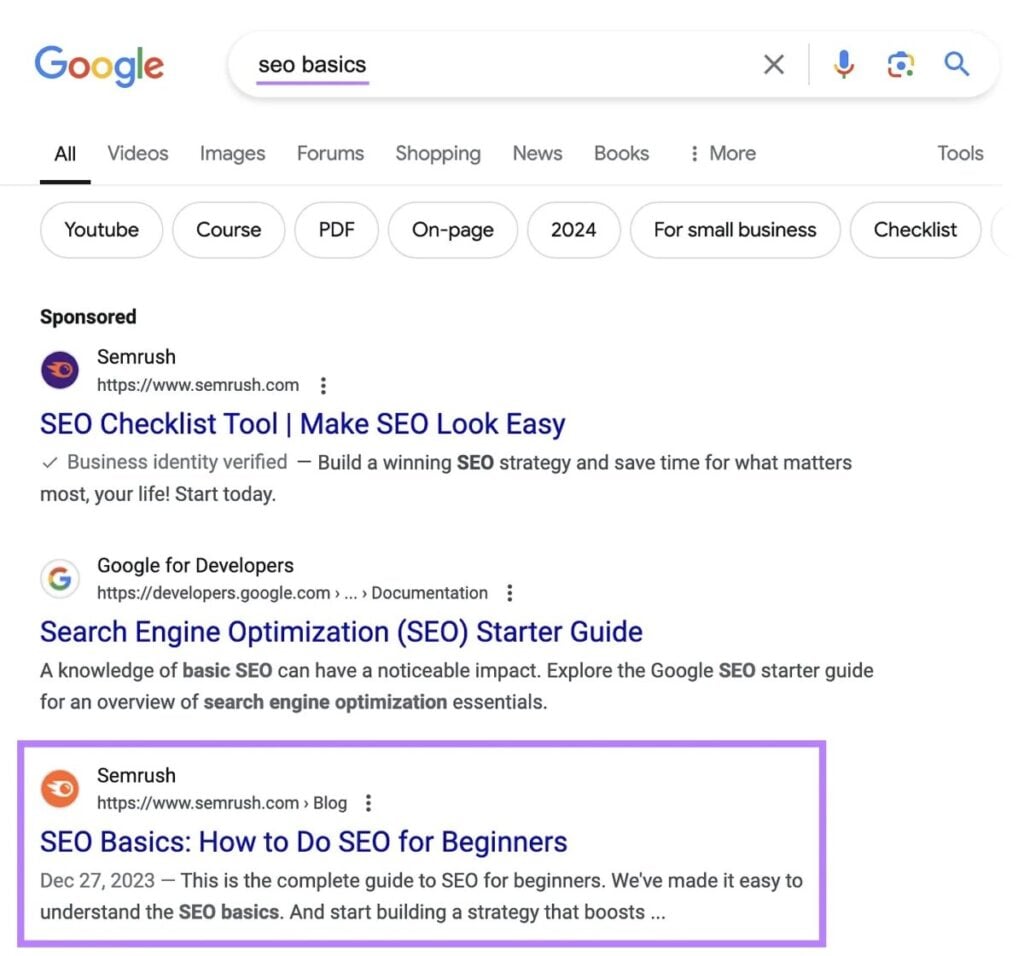
SEO basics
Use Semrush’s Keyword Magic Tool to get ideas for ToFu keywords you can create content around.
Enter a topic that relates to your brand. Then, select your target country and click “Search.”
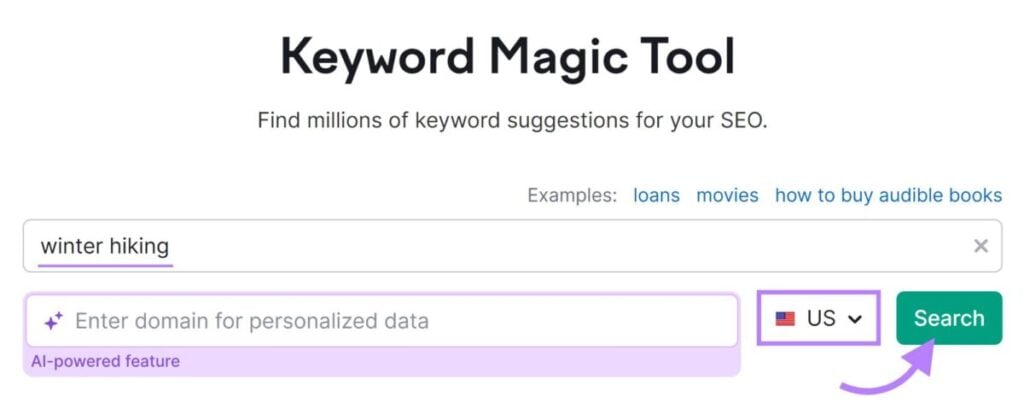
Keyword magic tool
To find terms that are likely related to the general information people at this funnel stage are searching, use the “Intent” filter to select the checkbox next to “Informational” and click “Apply.”
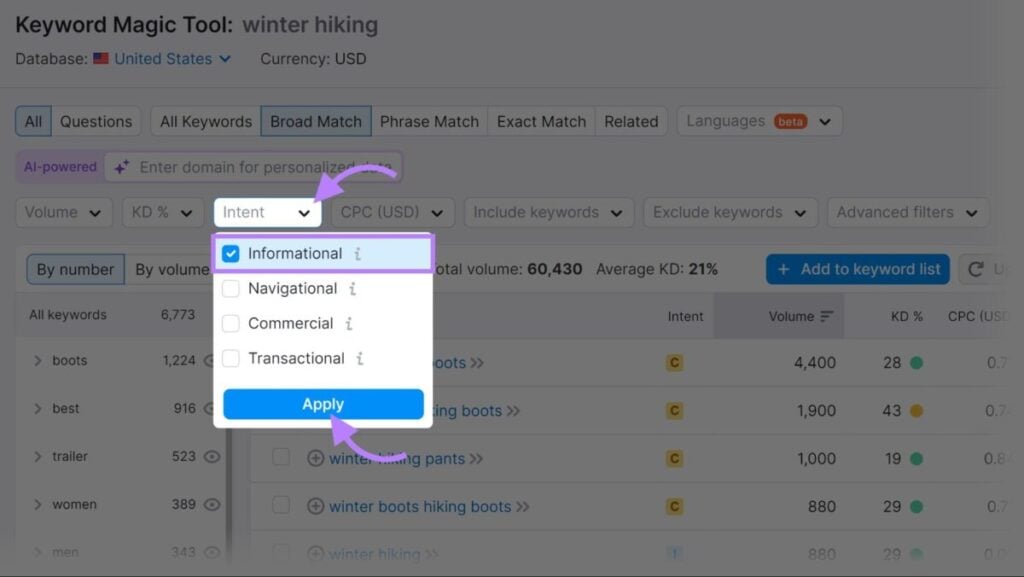
“Intent” filter
Next, navigate to the “Questions” tab.
You’ll see a list of informational intent questions that people are entering into Google.
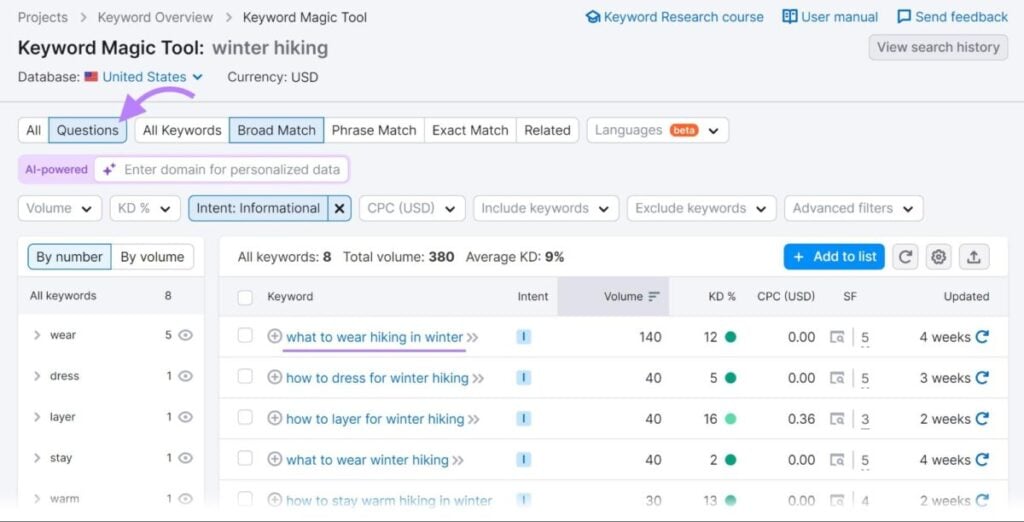
“Questions” tab
Based on this keyword research, you could create a blog post focused on the term “what to wear hiking in winter.” And mention any relevant products when natural.
This can add more prospective customers to your funnel.
But SEO isn’t the only way to generate brand awareness.
An effective content marketing funnel could also include these kinds of ToFu content:
- Email campaigns: Send subscribers regular newsletters
- Social media posts: Share engaging images, videos, and links with your social media followers
- Guest blogs: Publish helpful content on other websites that are popular among your target audience
Middle of the Funnel
Middle-of-funnel marketing aims to make prospects consider your brand, products, and/or services among their options.
People in the MoFu stage are actively looking to solve a problem. They already know your brand, so the goal is to provide education that helps them better understand what you offer and how you stand out from your rivals.
One common type of content that works well for this is how-to guides. Like this Darn Tough blog post that guides readers on choosing the right socks.
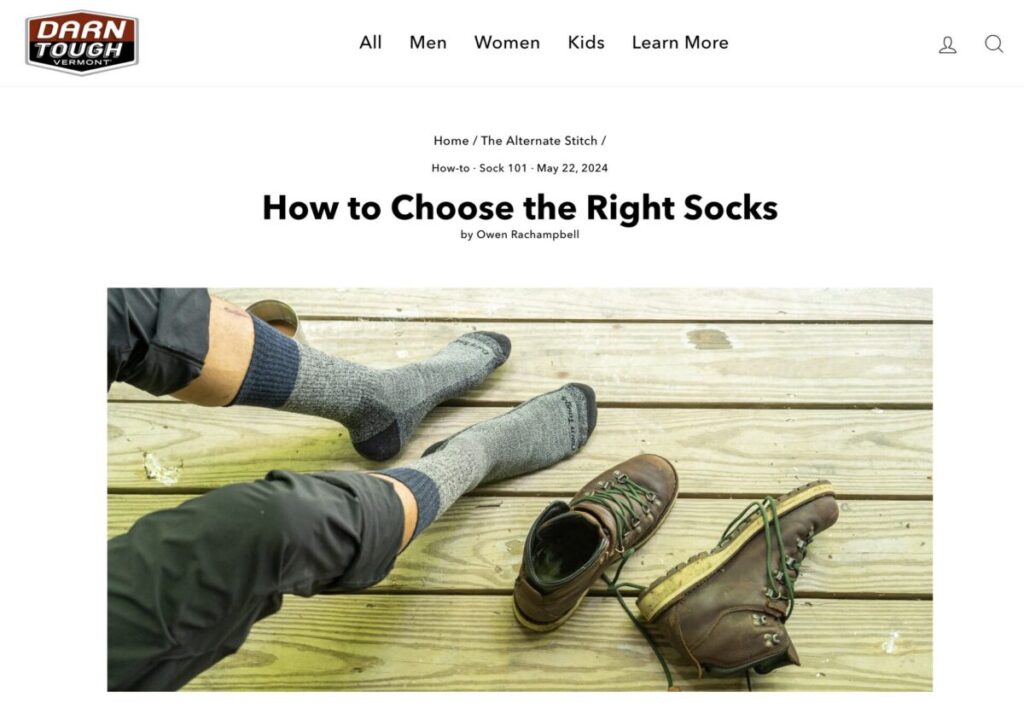
Darn Tough blog post
The brand makes specific product recommendations that customers can easily browse or add to their shopping carts.
How can you do this yourself?
Start by researching the main players in your niche. To see what types of content they create and identify ways to do it better.
Use Semrush’s Organic Research tool to do this.
Enter a competitor’s domain and click the “Search” button.
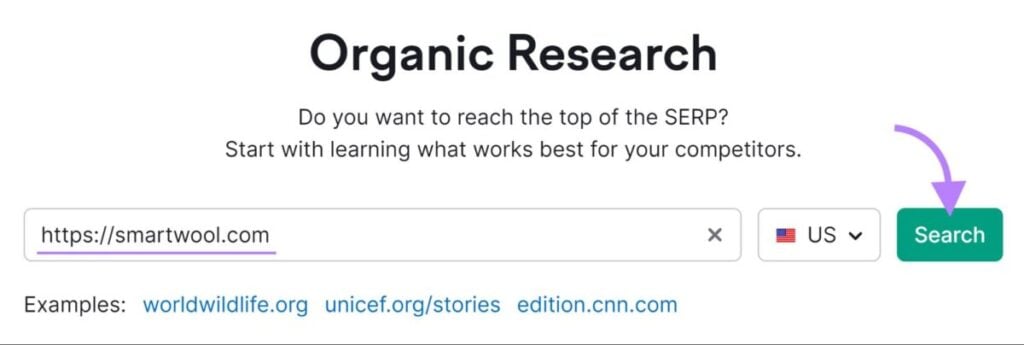
“Search” button
Then, navigate to the “Pages” tab.
Open the “Intent” filter, select the checkbox next to “Commercial,” and click “Apply.”
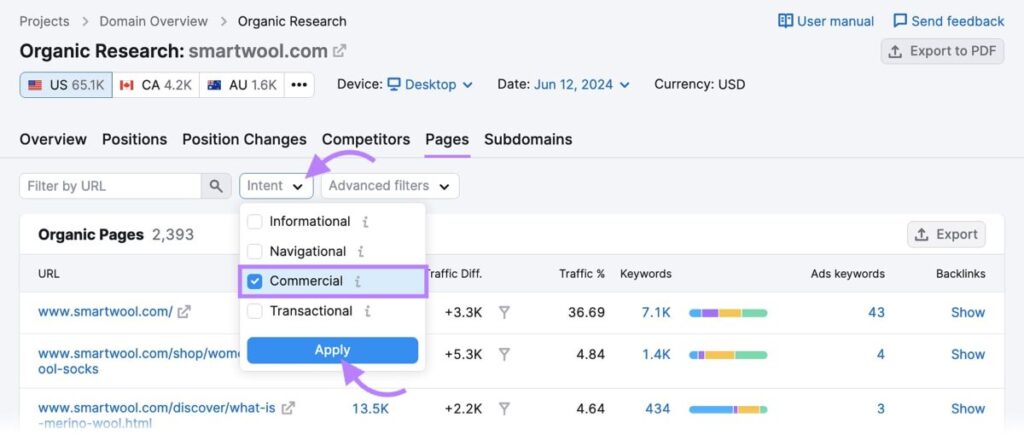
“Intent” filter
You’ll get a list of that competitor’s pages that rank for commercial keywords—i.e., terms that indicate the searcher is looking to do research before making a purchase decision.
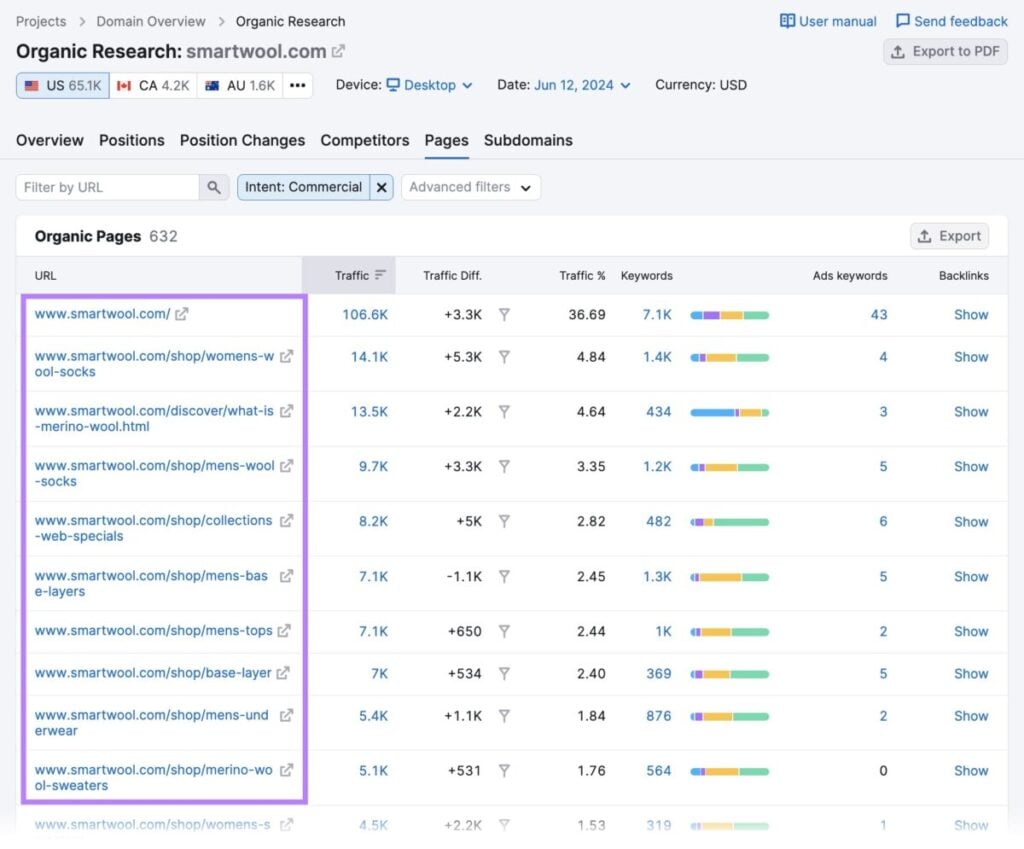
Rank for commercial keywords
Click any URL to see an overview of the page, including top keywords it ranks for.
Click the “View all # keywords” button if you want to see a complete list of terms that page ranks for.

View all # keywords
Based on this information, you might decide to write a blog post targeting “merino wool socks.” And craft it to showcase what makes your offerings stand out.
Other MoFu content ideas include:
- Email marketing campaigns: Send targeted campaigns to customers who’ve demonstrated interest in related topics
- Interactive tools: Design simple tools or calculators to engage prospects while providing value. For example, create a quiz that helps customers choose the right pair of socks based on their preferences and favorite activities.
- Product demos: Show prospects how your product or service works via video, GIF, or interactive demo
Bottom of the Funnel
Bottom-of-funnel marketing focuses on turning prospects into customers.
Prospects at the BoFu stage have done their research and considered their options. They’re ready to take action and make a purchase decision.
And your job is to convince them to choose your brand over the competition. Which you can do with persuasive content that addresses their specific questions about features, benefits, pricing, etc.
For example, this Kustomer landing page highlights efficiency and impressive call deflection capabilities.
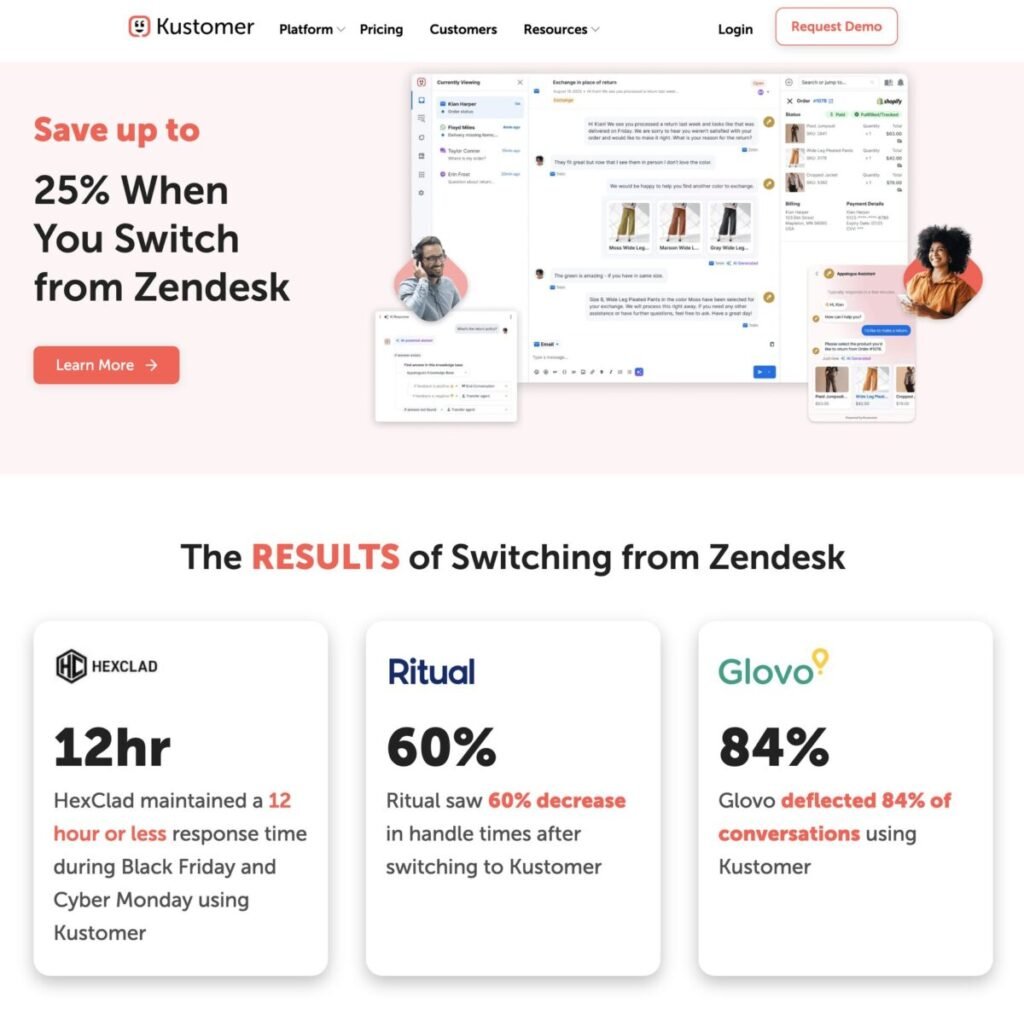
Kustomer landing page
It highlights specific results customers have achieved. Plus, it includes a call to action (CTA) with a discount offer.
To replicate this sort of landing page, it’s a good idea to analyze the transactional keywords your competitors are using but you aren’t. So you can use those terms in your own BoFu content.
Use Semrush’s Keyword Gap tool for this.
Enter your domain followed by at least one competitor’s domain. And click “Compare.”
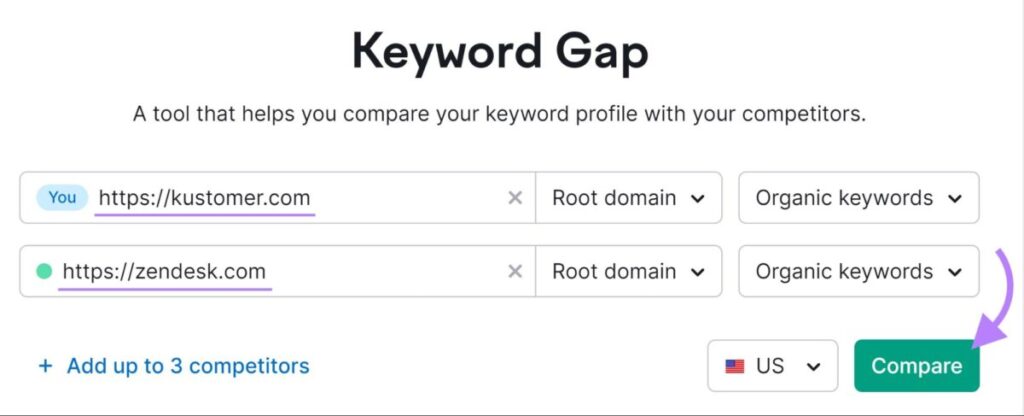
Keyword Gap tool
Go to the “Missing” tab, Open the “Intent” filter, and choose the checkbox next to “Transactional.”
Then scroll down and make sure the “Missing” tab is selected.
You’ll get a list of bottom-of-funnel keywords your competitors rank for—but you don’t.
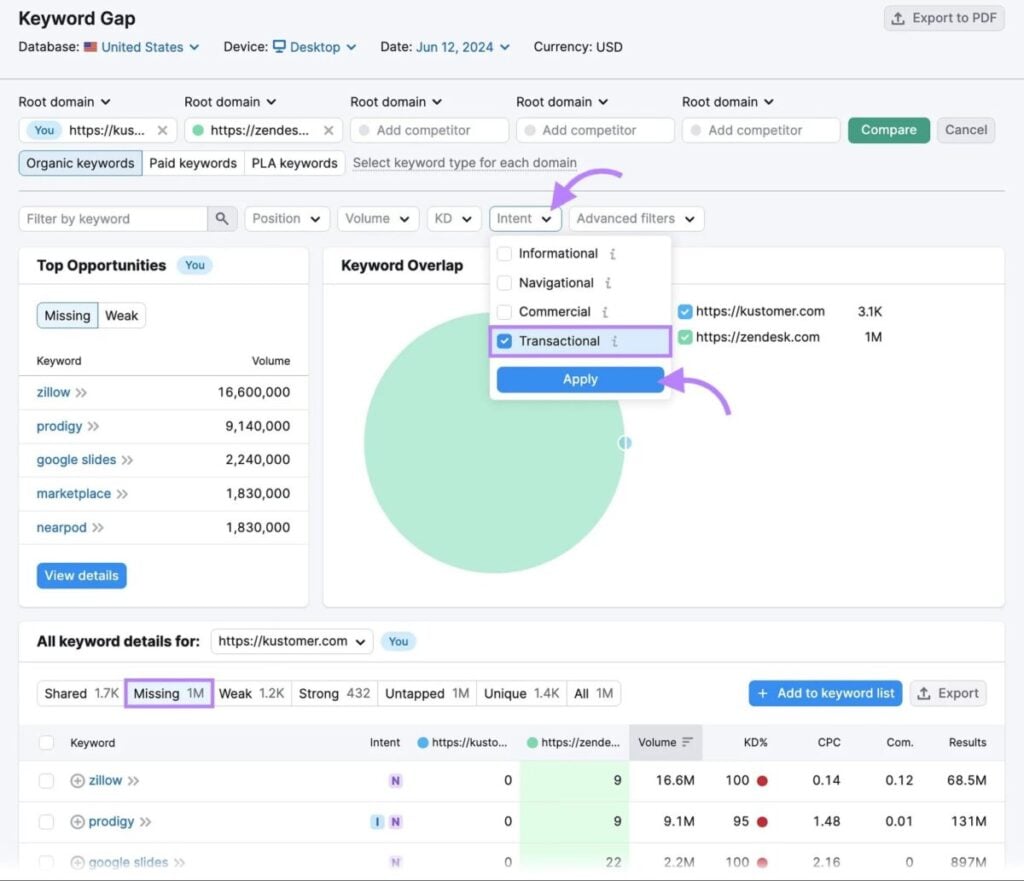
“Missing” tab
And go to the “Weak” tab to see terms you rank for but your competitors rank better. Which indicates you have room to improve.
You may also want to apply an advanced filter to omit terms that include your competitors’ brand names. Unless you want to specifically compare yourself against a competitor—as Kustomer has done with their landing page from earlier.
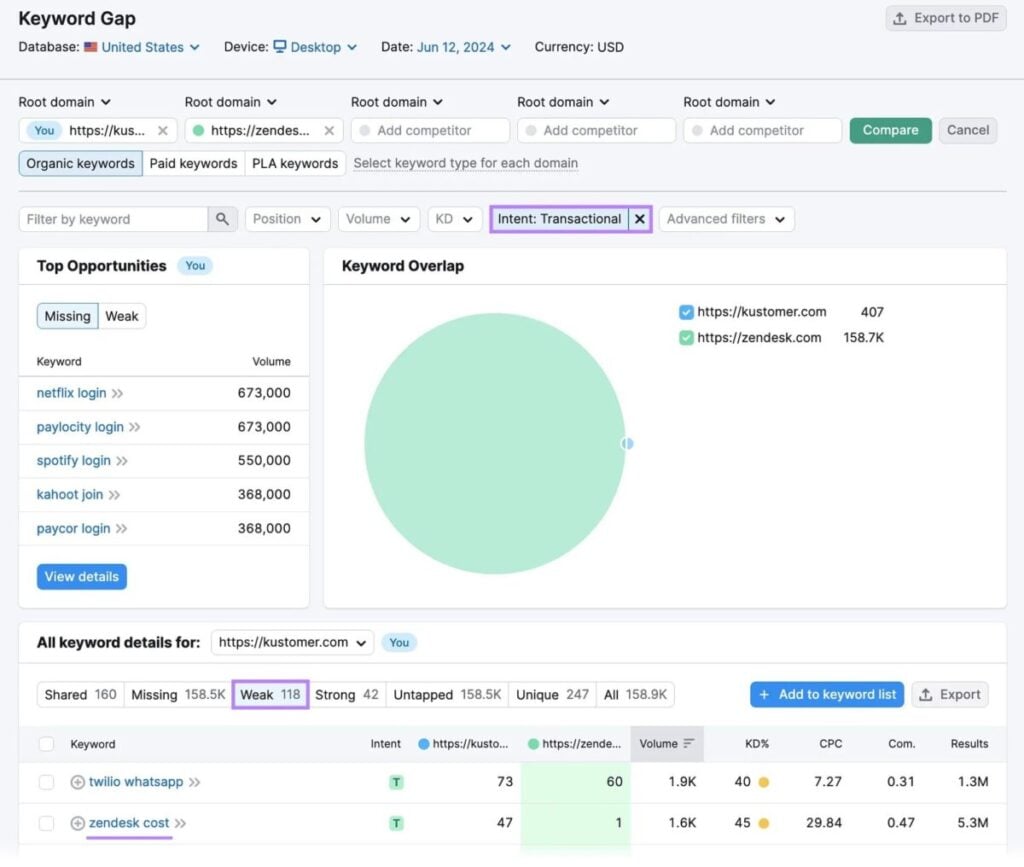
“Weak” tab
The terms you discover can be great candidates for landing pages.
Other BoFu content formats to consider include:
- Case studies: Detail how existing customers use your product or service
- Comparison pages: Compare your product or service to the competition in terms of features and price
- FAQ pages: Answer frequently asked questions that may prevent potential customers from taking the next step
Build a Full-Funnel Marketing Strategy
For an effective marketing strategy, you need content targeted to each stage of the funnel.
This allows you to meet prospects where they are. And increase the odds of them becoming customers.
It’s easy to do this with Semrush tools like:


